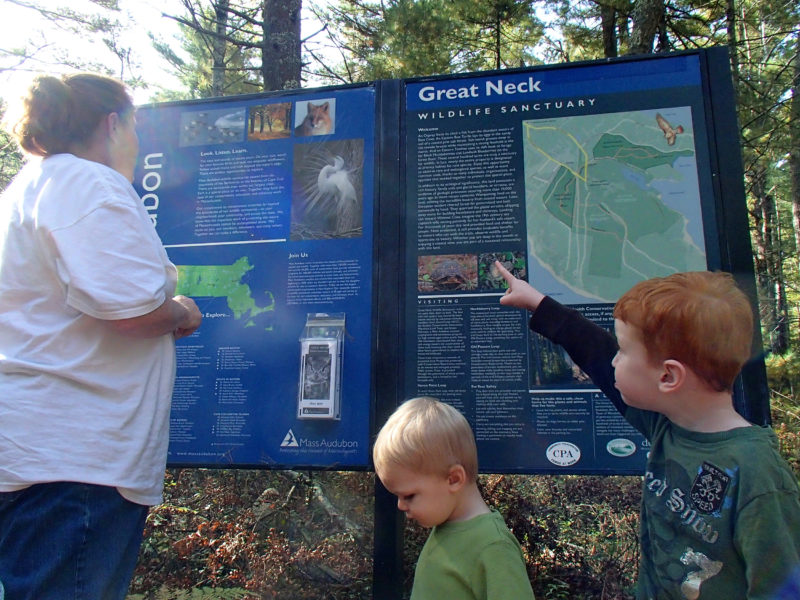Great Neck Wildlife Sanctuary
With fragrant pine forests and beautiful salt marshes overlooking the entrance to the Cape Cod Canal, Mass Audubon’s Great Neck Wildlife Sanctuary is a peaceful place for visitors to explore nature. Follow a looping network of paths through the woods to discover birds, turtles, and interesting remnants of Buzzards Bay’s glacial past.
Features
Mass Audubon’s Great Neck Wildlife Sanctuary protects coastal forests and salt marshes that provide important habitat for a variety of wildlife. The sanctuary is located on the west side of the canal, but it’s so close to Cape Cod that nature-lovers from either side of the canal can enjoy an outing to Great Neck.
This land was protected in 2010 through a partnership that included Mass Audubon, the Wareham Land Trust, the Coalition, the town of Wareham, and the Roman Catholic Diocese of Fall River. Today, the sanctuary is managed by Mass Audubon’s Allens Pond Wildlife Sanctuary.
Trails

Families will enjoy exploring Great Neck Wildlife Sanctuary’s easy, scenic looping trails through the woods.
Great Neck Wildlife Sanctuary has four miles of easy, looping trails for you to explore. From the parking area on Stockton Short Cut, you’ll find two trailheads: the Huckleberry Loop and the Heron Point Loop. These old carriage roads and deer paths criss-cross a network of protected forests. (Download trail map)
At 2.2 miles, the Huckleberry Loop and adjoining Old Pasture Loop offers the longest walk at Great Neck. Keep right on the Huckleberry Loop from the parking area, and you’ll soon find a large glacial erratic among the pines — a massive boulder left behind by retreating glaciers during the last Ice Age. The Old Pasture Loop circles through private land that has been protected forever by a conservation restriction.
Across the road from the Huckleberry Loop lies the trailhead to the Heron Point Loop. Follow this mile-long trail through the forest to find Great Neck’s most scenic spot: the Osprey Overlook, which provides an excellent view of salt marshes along protected Bass Cove.
Habitats & Wildlife
Great Neck’s mix of pine forest and salt marshes are listed as priority habitats for rare species like Eastern box turtles. As you wander through the woods, look out for signs of woodland birds, small mammals, and sensitive amphibians hiding among the forest’s understory. If you move quietly, this forest is known for being a great place to spot grazing deer. You may even encounter a roosting great horned owl! You’re most likely to see wildlife from the sanctuary’s salt marsh overlook: in summer, nesting ospreys soar over the cove while herons and egrets wade in the shallows searching for prey.

 Download Property Map
Download Property Map